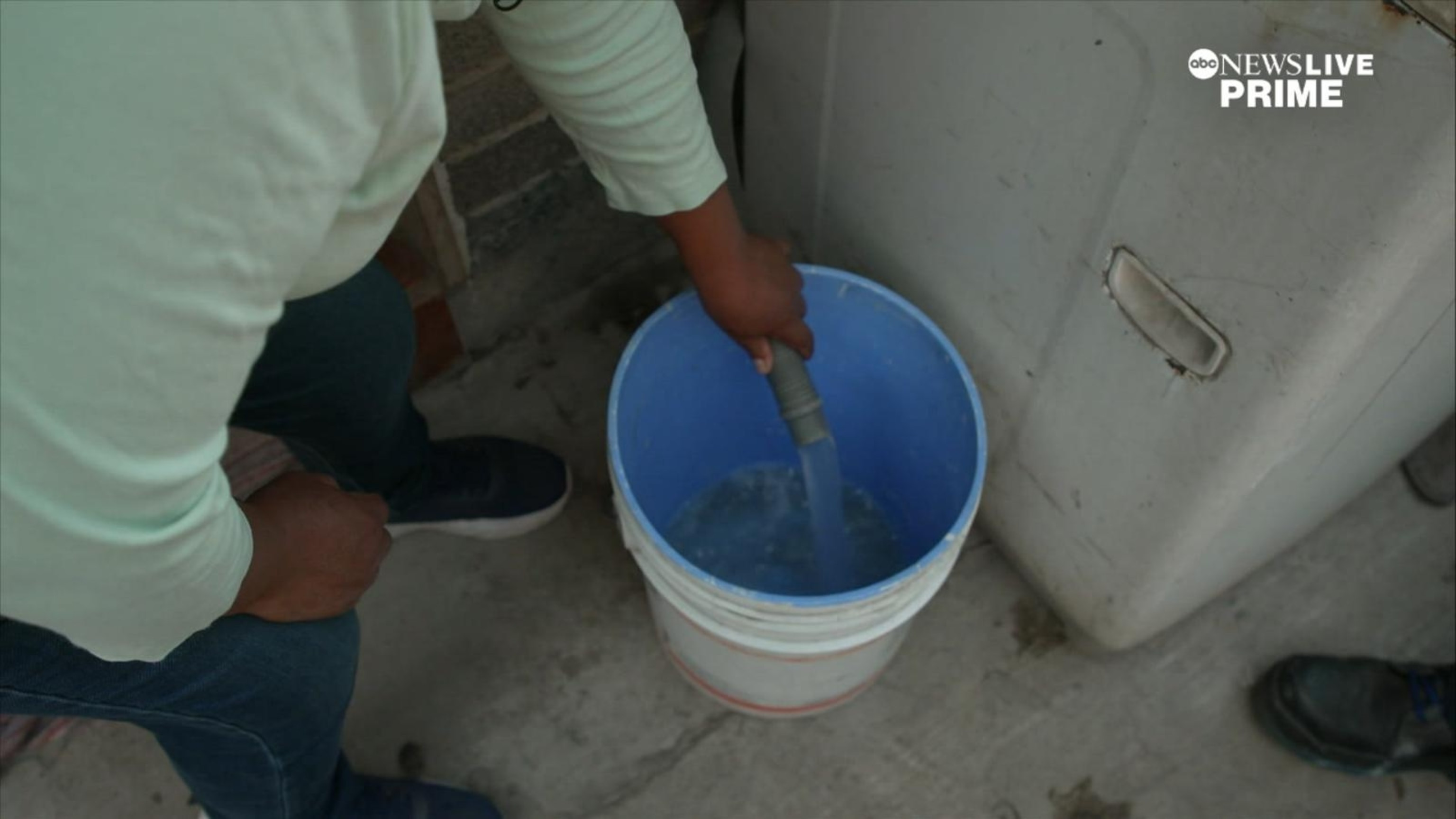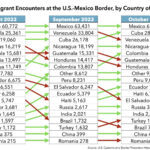Mexico City, a sprawling metropolis and one of the world’s largest urban centers, is grappling with a severe and escalating water crisis. This impending disaster, decades in the making, stems from a complex interplay of factors, notably human-induced climate change and infrastructural challenges. The dwindling water supply has sparked deep concern among residents, forcing many to adopt drastic measures to secure this essential resource.
In the face of prolonged drought and the absence of consistent rainfall, access to running water has become a luxury for many in Mexico City. Residents are compelled to treat every single drop of water with extreme caution. For low-income families, the necessity of purchasing water represents a significant financial burden, exacerbating existing economic strains.
Bernardo Nonato Corona, residing in the hills surrounding Mexico City, shared with ABC News the stark reality of this situation. He revealed that a staggering 25% of his earnings are now allocated to water procurement. His experience is not unique; millions across Mexico City’s vast urban landscape echo similar stories of hardship and financial strain due to the water shortage.
 Parched land in Mexico City symbolizes the ongoing water crisis and drought.
Parched land in Mexico City symbolizes the ongoing water crisis and drought.
“Water is very necessary and is used for everything,” Corona explained, emphasizing the multifaceted role water plays in daily life. “To drink it, for the maintenance of the house, for personal use, even for the plants themselves, since it doesn’t rain and you have to water them because it uses up a lot.”
The Escalating Water Scarcity in Mexico City
Over recent months and years, Mexico City’s watershed has witnessed a significant decline in rainfall. The tangible consequences of this reduced precipitation are becoming increasingly apparent. For the first time, a widespread apprehension has emerged among the population, with many openly questioning whether the city is on the brink of a full-blown water shortage.
A substantial portion of Mexico City’s water supply, ranging from 60% to 70%, originates from aquifers – underground layers of rock and sediment that store groundwater, according to the city’s water authority. Alarmingly, a recent study has indicated that the equivalent of 5 million Olympic-sized swimming pools of groundwater has been extracted annually over the past decade.
The city’s reliance on rainfall to replenish reservoirs and groundwater levels is now critically threatened by the ongoing historic drought. This drought, intensified by human-caused climate change, casts serious doubt on the reliability of future rainy seasons, experts have cautioned.
Enrique Lomnitz, the founder of Isla Urbana, an organization dedicated to addressing Mexico’s water challenges, returned to Mexico City after his studies in the United States with a mission to mitigate the escalating water crisis in his homeland. His organization is actively engaged in efforts to prevent Mexico City from completely depleting its water resources.
“So the reservoirs are basically empty,” Lomnitz stated, highlighting the severity of the situation. “That’s 30, 40% of the city’s water that we’re no longer getting or we’re getting like a, like a trickle where we used to have a stream. So we’re not recharging our aquifers. We’re pumping an enormous, crazy amount of water out of the ground, because there’s 22 million people over here. And that is the basis of the problem.”
Infrastructure and Political Dimensions of the Water Crisis
Decades of insufficient investment in Mexico City’s water infrastructure have resulted in significant inefficiencies. Approximately 40% of the water pumped through the city’s पाइप network is lost due to leaks, seeping into the ground before reaching its intended destination. Paradoxically, during periods of rainfall, the city expels billions of gallons of water to prevent flooding – water that could potentially be treated and recycled to augment the dwindling supply.
Mexico City’s water system representatives have not yet responded to requests from ABC News for comment on these critical issues.
The water crisis has also entered the political arena. Mexico’s president-elect, Claudia Sheinbaum, who previously served as mayor of Mexico City, addressed the issue at a public event on May 5, 2024. Sheinbaum acknowledged the unforeseen nature of the current crisis, stating, “No scientist, because there is still no science that can do that, could predict this circumstance.”
However, this statement contrasts with the scientific consensus that droughts are predictable events, and proactive planning and mitigation measures are essential. Despite acknowledging the unexpected severity, Sheinbaum also indicated a commitment to addressing the crisis, stating, “We already know where the water is going to come from, how to invest, it is going to be the great investment that we are going to make in the metropolitan area of the Valley of Mexico.” ABC News’s request to the Sheinbaum campaign for further details on these investment plans remained unanswered.
Facing an Uncertain Water Future
The ongoing progression of climate change is expected to exacerbate the situation, with heat waves intensifying and droughts becoming more prolonged and severe. For residents like Corona and millions of others in Mexico City, the stakes are exceptionally high.
“We don’t think about our children, that if tomorrow, the way we are going, water will be more expensive and there will be more water shortages,” Corona expressed, underscoring the intergenerational implications of the crisis. “So if we don’t give a solution to the water issue, I don’t know what will happen tomorrow with our children, our grandchildren.”
Addressing Mexico City’s water shortage necessitates a fundamental shift towards more efficient and sustainable water management practices to enhance preparedness for future droughts. The confluence of a historic drought, amplified by climate change, record-breaking temperatures, and deficient infrastructure, compels Mexico City to prioritize improvements in its overall water utilization.
Despite the daunting challenges, Lomnitz offers a note of cautious optimism. “I think it’s an existential crisis for the city, but I think that people are incredibly adaptive,” Lomnitz said. “I think people are very resilient. I think Mexico City’s resilient. Mexico City’s been through a whole lot of things. It’s not over.”
